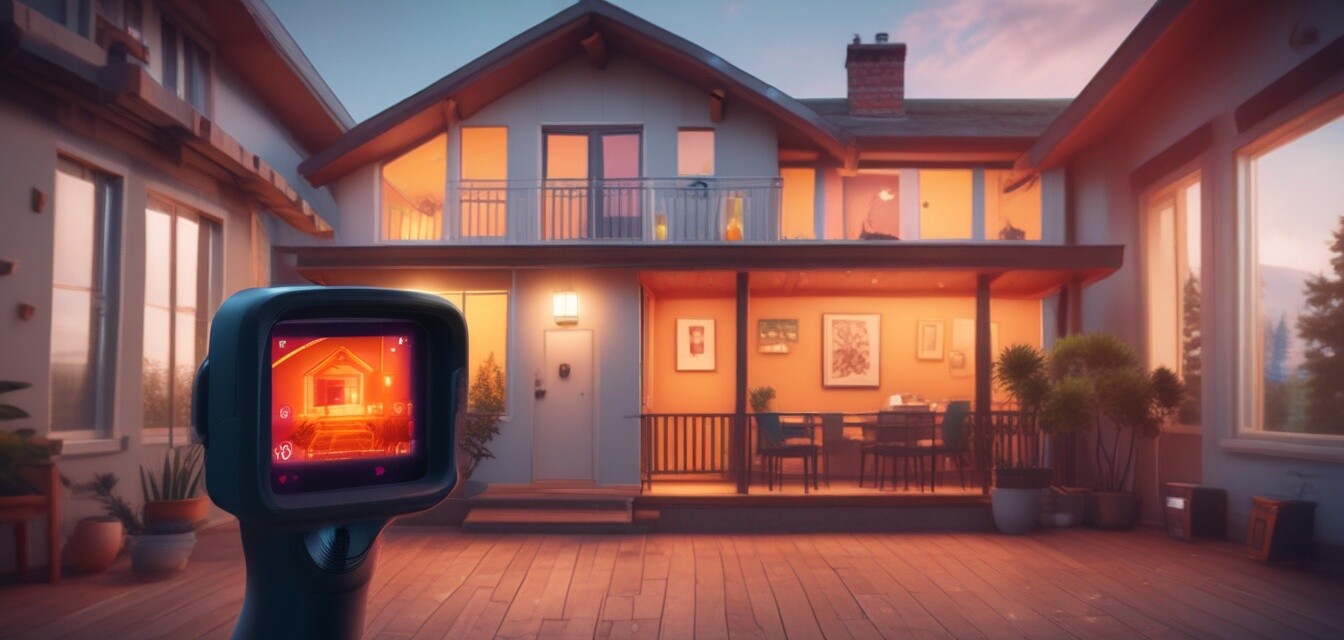
The Future of Thermal Imaging in Home Security
Key Takeaways
- Thermal imaging technology is becoming increasingly integral to home security systems.
- It provides enhanced surveillance capabilities, especially in low-light conditions.
- Understanding the latest trends in thermal imaging can help homeowners make informed decisions about their security needs.
- Integration with smart home technologies is evolving, making security systems more efficient and user-friendly.
- Regular updates and advancements in thermal imaging will continue to shape the future of home security.
In today's world, ensuring the safety of our homes has taken on greater urgency. As technology advances, so too do the methods we use to protect our properties and loved ones. One such advancement that has gained significant traction is thermal imaging technology. This article delves into the pivotal role thermal imaging is playing in modern home security, examining its advantages, recent trends, and future developments.
Understanding Thermal Imaging Technology
Thermal imaging technology detects heat emitted by objects and translates this data into visible images. This capability is invaluable for security purposes, as it allows for clear visibility even in complete darkness. By detecting temperature variations, thermal cameras can identify intruders, potential threats, and even monitor the health of external structures.
Advantages of Thermal Imaging in Home Security
Thermal imaging cameras offer several compelling advantages:
- Night Vision Capabilities: Thermal imaging operates effectively in total darkness, enhancing surveillance at night.
- Wide Coverage: These cameras can cover large areas, scanning entire backyards or driveways with ease.
- Heat Signatures: Detecting bodies or animals through heat signatures can help distinguish between threats and benign movement.
- Low Maintenance: Thermal cameras require minimal maintenance compared to traditional video cameras.
Current Trends in Thermal Imaging Technology
As thermal imaging technology evolves, here are some key trends to watch:
| Trend | Description | Impact on Home Security |
|---|---|---|
| AI Integration | Integrating artificial intelligence into thermal cameras for smarter recognition. | Improved accuracy in detecting threats. |
| Smart Home Compatibility | Thermal cameras are increasingly compatible with smart home systems. | Seamless integration into existing home security systems. |
| Cost Reduction | Advancements in technology have lowered the cost of thermal cameras. | More accessible for homeowners looking to enhance security. |
| Mobile Access | Mobile app control for thermal cameras allows remote monitoring. | Enhanced user control and flexibility. |
How to Choose a Thermal Imaging Camera
When considering thermal imaging for home security, take into account the following factors:
- Resolution: Higher resolution cameras provide clearer images.
- Field of View: Wider fields allow for greater area coverage.
- Durability: Look for weather-resistant models if outdoors.
- Connectivity: Ensure compatibility with your existing security system.
Future Developments to Anticipate
As technology advances, we can expect the following developments in thermal imaging:
- Enhanced Imaging Algorithms: Improvements in image processing for better clarity and detection.
- Integration with Drones: Utilizing drones equipped with thermal cameras for expansive surveillance.
- Real-Time Alerts: Instant notifications sent to homeowners regarding suspicious activity.
Tips for Implementing Thermal Imaging in Your Security System
- Conduct a thorough assessment of your property to identify high-risk areas.
- Consider a professional installation to ensure optimal camera placement.
- Regularly update software and firmware to benefit from the latest features.
- Combine thermal imaging with traditional cameras for comprehensive coverage.
- Stay informed on advancements by checking resources like our latest security technology trends to enhance your home security knowledge.
Pros
- Effective in low-light and complete darkness.
- Enhanced detection of intruders.
- Wide area surveillance capability.
- Low maintenance and high durability.
- Integration with smart home systems.
Cons
- Initial investment can be higher compared to traditional cameras.
- Potential for false alarms if not calibrated properly.
- Limited effectiveness through certain materials like glass.
Conclusion
As we look toward the future of home security, thermal imaging technology stands out as an essential tool for enhancing safety and protection. By understanding its advantages, current trends, and future developments, homeowners can make informed decisions about incorporating thermal imaging into their security systems. Embracing this technology not only offers peace of mind but also greatly improves overall home safety.
For more information on modern security systems, check out our guides on security alarms and wireless cameras. Stay safe!
